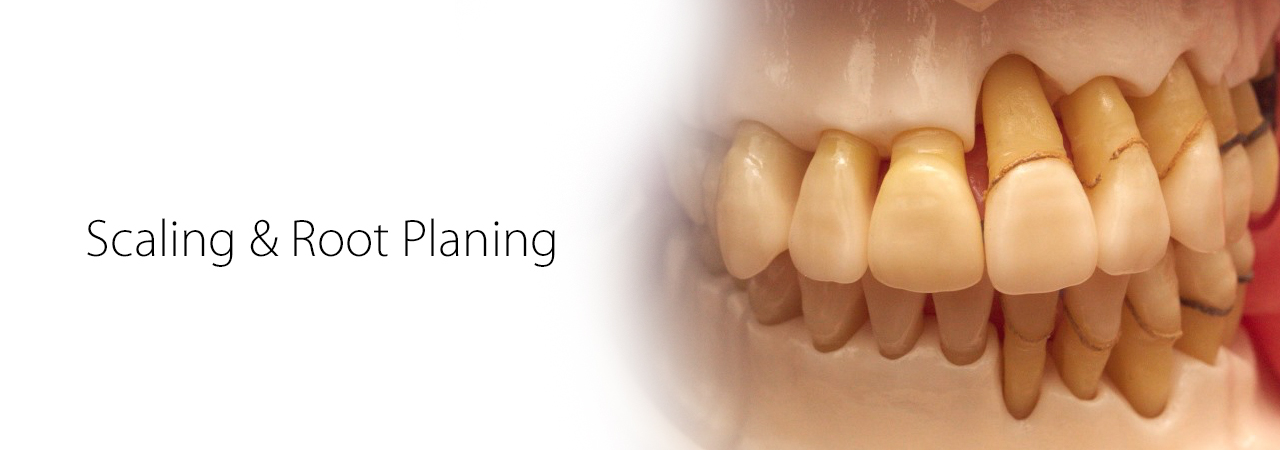
Scaling & Root Planing
The initial stage of treatment for periodontal disease is usually a thorough cleaning that
may include scaling or root planing (SRP). The objective of these non-surgical
procedures is to remove etiologic agents such as dental plaque and tartar (calculus),
which cause gingival inflammation and disease. Scaling and root planing can be used as a stand-alone treatment, or a preventative measure. They are commonly performed
on cases of gingivitis and moderate to severe periodontal disease.
Periodontal diseases are infections of the gums, which gradually destroy the supporting
bony structure of your natural teeth.
Scaling and root planning (SRP) is only recommended after a thorough examination of
the gum. SRP is an effective none surgical way to treat an active periodontal disease.
Depending on the condition of the gums, the amount of tartar present, the depth of the
pockets, and the progression of periodontitis, Dr. Wang may recommend full quadrants
of SRP, or limited quadrats of SRP. Local anesthesia may be used during the
procedure to ensure your comfort.
Scaling:
When scaling is performed, calculus and plaque that attaches to the tooth
surfaces is removed. The process especially targets the area below the gum line,
along the root. Scaling is performed with a special dental tool called an ultrasonic
scaling tool. The scaling tool usually includes an irrigation process that can be
used to deliver an antimicrobial agent below the gums to help reduce oral
bacteria.
Root Planing:
Root planing is performed in order to remove cementum and surface dentin that
is embedded with unwanted microorganisms, toxins and tartar. The root of the
tooth is literally smoothed, which promotes healing, and also helps prevent
bacteria from easily colonizing in the future.
Antibiotics or irrigation with anti-microbial (chemical agents or mouth rinses) may be
recommended to help control the growth of bacteria that create toxins and cause
periodontitis. In some cases, it is beneficial to place antibiotic, such as Arestin,
within the periodontal pockets after scaling and planing. This may be done to control
infection and to encourage normal healing.
When deep pockets between teeth and gums are present, it is difficult for to thoroughly
remove plaque and tartar. Patients can seldom, if ever, keep these pockets clean and
free of plaque. Consequently, surgery may be needed to restore periodontal health.
If treatment is successful, scaling and planing may have many periodontal benefits. One
is that it can help you recover from periodontal disease and prevent infection from
traveling to other parts of the body. Research has proven that bacteria from periodontal
infections can travel through the blood stream and affect other areas of the body,
sometimes causing heart and respiratory diseases. Scaling and root planing remove
bacteria that cause these conditions.
Another benefit of treatment is protecting teeth against tooth loss. When gum pockets
exceed 3mm in depth, the risk for periodontal disease progression increases. As
pockets deepen, more bacteria are able to colonize, eventually causing a chronic
inflammatory response by the body to destroy gingival and bone tissue. This leads to
tooth loss.
Finally, scaling and root planing may make the mouth more aesthetically pleasing, and
should reduce bad breath caused from food particles and bacteria in the oral cavity.
Superficial stains on the teeth will be removed during scaling and planing, adding an
extra bonus to the procedures.

